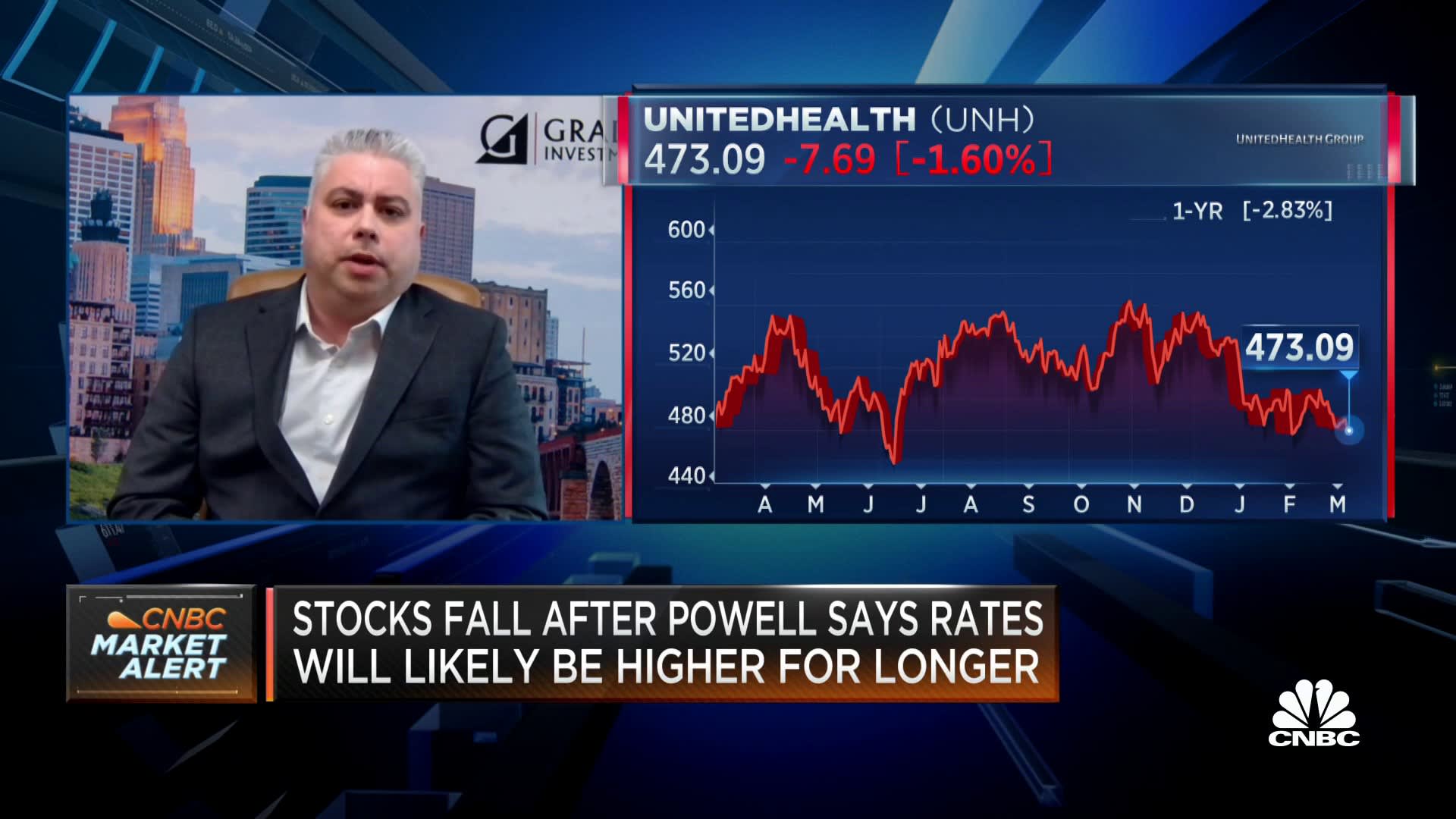Federal Reserve Chair Jerome H. Powell testifies before a U.S. Senate Banking, Housing, and Urban Affairs Committee hearing on “The Semiannual Monetary Policy Report to the Congress” on Capitol Hill in Washington, March 7, 2023.
Kevin Lamarque | Reuters
The U.S. Federal Reserve cannot disrupt its cycle of interest rate increases until the nation enters a recession, according to TS Lombard Chief U.S. Economist Steven Blitz.
“There is no exit from this until he [Fed Chair Jerome Powell] does create a recession, ’til unemployment goes up, and that is when the Fed rates will stop being hiked,” Blitz told CNBC’s “Squawk Box Europe” on Wednesday.
He stressed that the Fed lacks clarity on the ceiling of interest rate increases in the absence of such an economic slowdown.
“They have no idea where the top rate is, because they have no idea where inflation settles down without a recession.”
Powell told lawmakers on Tuesday that stronger-than-expected economic data in recent weeks suggests the “ultimate level of interest rates is likely to be higher than previously anticipated,” as the central bank looks to drag inflation back down to Earth.
The Federal Open Market Committee’s next monetary policy meeting on March 21 and 22 will be critical for global stock markets, with investors closely watching whether policymakers opt for an interest rate hike of 25 or 50 basis points.
Market expectations for the terminal Fed funds rate were around 5.1% in December, but have risen steadily. Goldman Sachs lifted its terminal rate target range forecast to 5.5-5.75% on Tuesday in light of Powell’s testimony, in line with current market pricing according to CME Group data.
Bond yields spiked, and U.S. stock markets sold off sharply on the back of Powell’s comments, with the Dow closing nearly 575 points lower and turning negative for 2023. The S&P 500 slid 1.53% to close below the key 4,000 threshold, and the Nasdaq Composite lost 1.25%

“There’s going to be a recession, and the Fed is going to push the point and they’re gonna get the unemployment rate to at least 4.5%, in my guess it probably ends up getting up to as high as 5.5%,” Blitz said.
He noted that there are “rumblings” of an economic slowdown in the form of layoffs in the finance and tech sectors and a stalling housing market. Along with weakness in U.S. stock market, Blitz suggested an “asset crunch and the beginnings of the potential for a credit crunch,” in the form of banks pulling back on lending, could be underway.
“Either you get a recession mid-year and the top rate is 5.5% or there is enough momentum, the January numbers are right, and the Fed keeps going and if they do keep going, my guess is that the Fed’s going to get up to 6.5% on the funds rate before things really start to slow down and reverse,” he said.
“So in terms of risk assets, it’s not a question of whether, it’s really a question of when, and the longer this thing goes, the higher the rate has to get to.”
The January consumer price index rose 0.5% month-on-month as rising shelter, gas and fuel prices took their toll on consumers, indicating a potential reversal of the inflation slowdown seen in late 2022.
The labor market remained red hot to start the year, with 517,000 jobs added in January and the unemployment rate hitting a 53-year low.
The February jobs report is due from the Labor Department on Friday and the February CPI reading is slated for Tuesday.

In the research note announcing its increase to the terminal rate forecast, Goldman Sachs said that it expects the median dot in the March Summary of Economic Projections to rise by 50 basis points to 5.5-5.75% regardless of whether the FOMC opts for 25 or 50 basis points.
The Wall Street giant also expects the data ahead of the March meeting to be “mixed but firm on net,” with JOLTS job openings falling by 800,000 to provide reassurance that rate hikes are working, alongside an above-consensus forecast for a 250,000 payroll gain but a soft 0.3% rise in average hourly earnings.
Goldman also forecasts a firm 0.45% monthly increase in core CPI in February, and said that the combination of likely data creates “some risk that the FOMC could hike by 50bp in March instead of 25bp.”
“In recent months we have argued that the drag on GDP growth from last year’s fiscal and monetary policy tightening is fading, not growing, and that this means that the key risk for the economy is a premature reacceleration, not an imminent recession,” Goldman economists said.
“Last weekend we noted that consumer spending in particular poses upside risk to growth that, if realized, might lead the FOMC to hike by more than currently expected in order to tighten financial conditions and keep demand growth below potential so that labor market rebalancing stays on track.”


